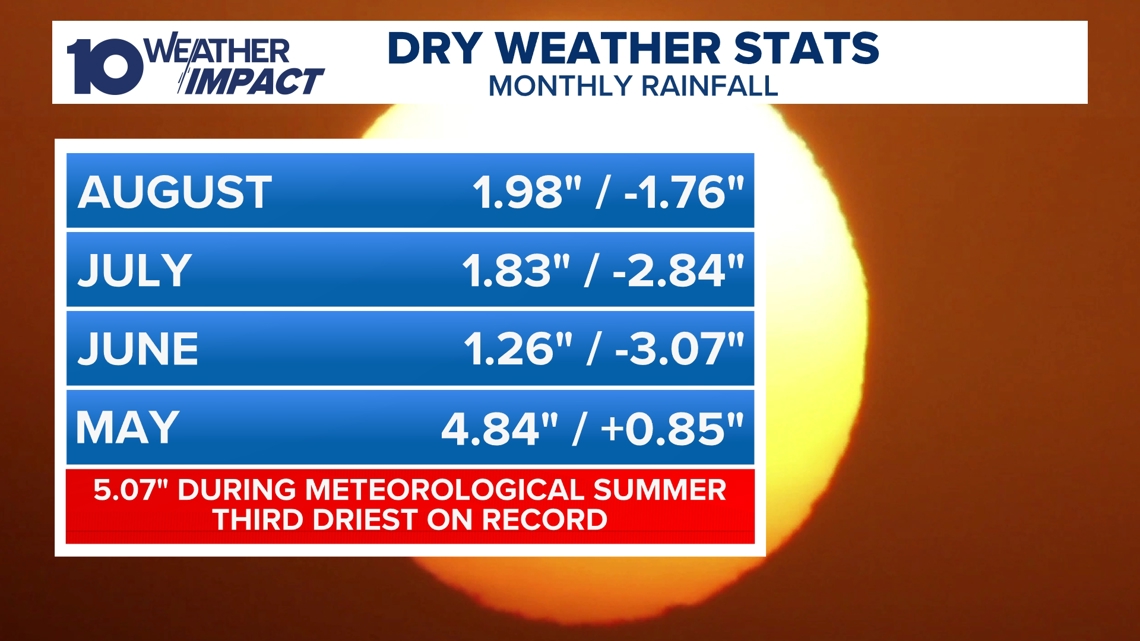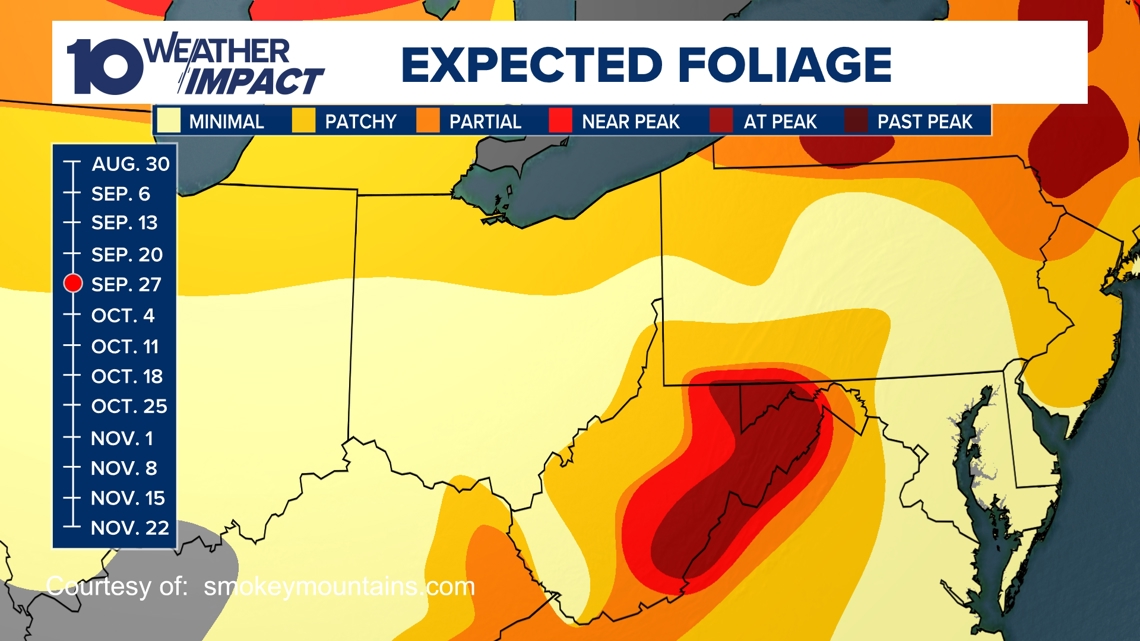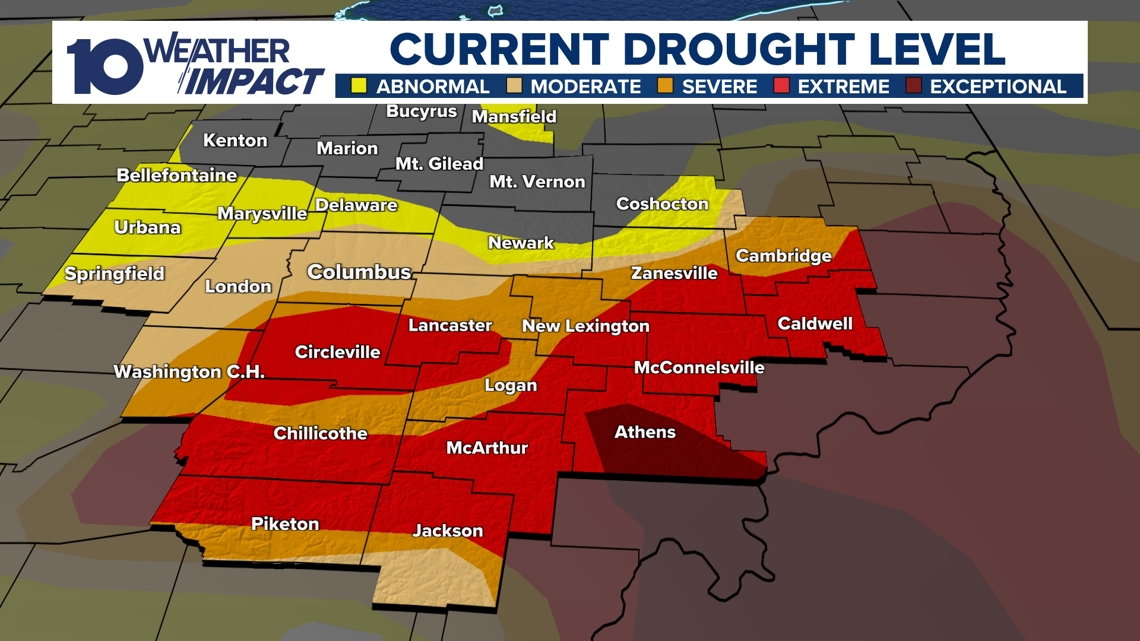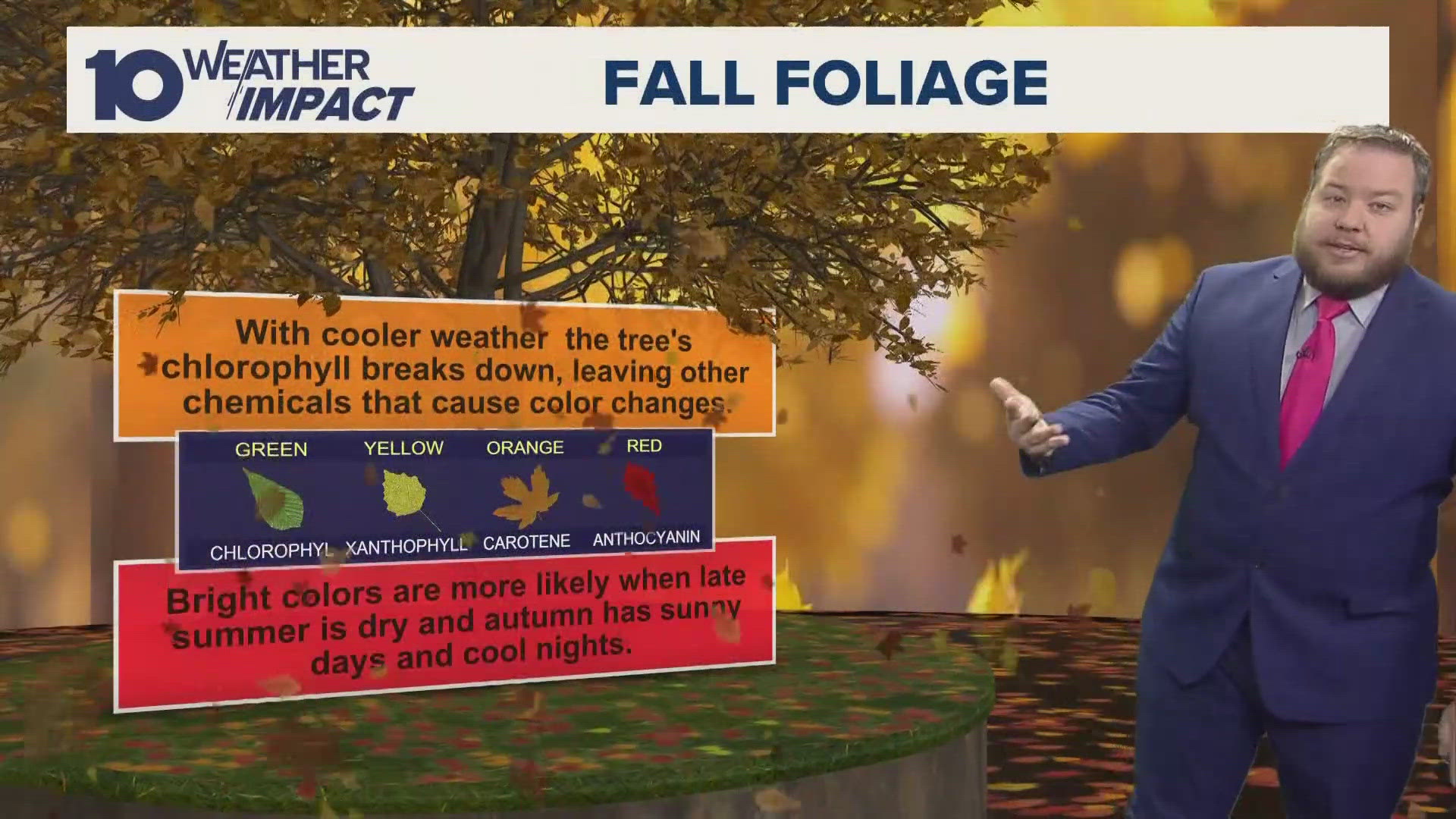COLUMBUS, Ohio — Meteorological fall has only just begun, but the peak of fall colors could be over even before it has started to show. That's because a long and drought-riddled summer weather pattern has been taking a toll on trees around the Buckeye state.
Going back to the beginning of summer in June, we have been consistently underperforming in the rainfall department. In fact, with meteorological summer ending this past weekend, we are officially the third driest summer ever here in central Ohio.
From June 1 through the end of August, just 5.07 inches of rain fell. That's 7.67 inches below normal for this time of the year.


That lack of moisture has put a lot of stress on trees, crops and plants around the region, leading to some skipping the usual fall pageantry and turning brown already. Typically we should not see fall colors start to show until mid to late September in our neck of the woods.


According to Climate Central, severe drought can cause fall colors to show up early or even skip most of the spectrum and go straight for brown. However, some in Ohio may still have a chance to see some of the usual fall displays.
Areas that have seen a lesser drought, mostly those north of I-70, could still see plenty of colors this fall, but likely on a delayed timetable.
Below is a map of the drought conditions in Ohio as of Aug. 27, 2024.


While at this point any additional rainfall is likely too late to change the fall color forecast for the hardest hit regions, we will still need the rain regardless. What we need now is a return to prolonged and steady rainy patterns that do not come all at once to avoid any potential flooding issues. Drought-stricken areas cannot absorb water as fast as those that are in more normal conditions.
Sadly, that does not appear to be in the current climate outlook for at least the next month, possibly even longer.
-- Meteorologist Michael Behrens
Follow me on social media! Facebook Meteorologist Michael Behrens, X/Twitter @MikeBehrensWX, and Instagram/Threads @MikeBehrensWX.
Email me at: MBehrens@10tv.com

